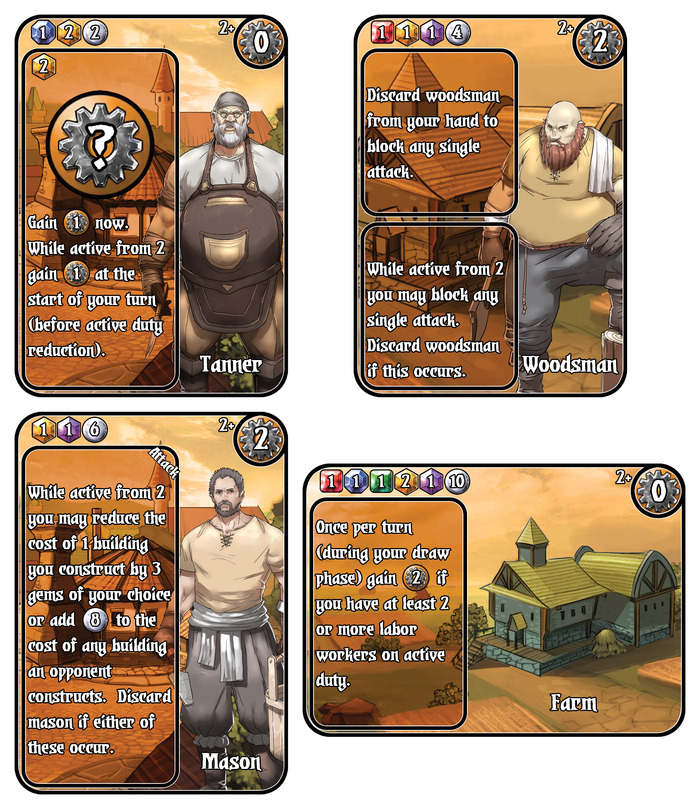Deck-building games have become a new craze since the commercial success of Dominion. Dominion didn’t exactly create the idea of a deck-building game – alternatives to the trading card model of making decks has been around almost as long as trading card games themselves. Not that this is a bad thing. Needless to say though that Dominion made a much larger part of the gamer spectrum aware that deck-building games could be, you know, fun.
The trick now is to come up with your own twist on purchasing cards to create your own deck. For some, it’s simply adding a theme. For others, it involves adding in additional mechanics to help differentiate it from the rest. In the case of Empires of Zidal, they do both.
If you aren’t familiar with deck-building games, the premise is this: rather than have a defined deck ready to go at the beginning of a game, you are given a mere handful of cards. Your turns will usually involve using the resources you have in your hand to purchase additional cards from a shared pool of cards available to all players. These cards will be added to your deck and become available as you continually go through and reuse it. This allows you to tailor what is in your deck to a variety of different styles and strategies, depending on what you are trying to do within the game. For example, these are some of the cards you can attain in Empires of Zidal:
Empires of Zidal is a medieval fantasy-themed deck-builder, which, oddly, hasn’t been widely done yet. Especially one that focuses on the medieval vibe. Well, alright, besides Dominion. Mechanically, what Empires does slightly different isn’t so much in the deck building concept itself. However, it does include a requirement of having an available child/apprentice card in your hand in order to train them into the role card you wish to purchase. Rather, what makes Zidal stand out is the two things it adds to the mix.
The first is building structures, such as the Farm shown above. These cards aren’t put into your deck when purchased but instead are put in your playing area permanently. While you’re only limited to a couple in the game, they provide the player with unique abilities that are only available to them. This creates yet another means of tuning your deck to your own strategies, providing additional variety for playing the game again later.
The second aspect is the resource market. If you’ve ever played Power Grid, think of that. If you haven’t, a resource market is essentially a simplified mechanic for supply-and-demand economics. To purchase cards in deck-building games, most of them require some kind of resources. In many games this is money. In Empires of Zidal, it is gems and silver. Since you rarely will have all the different kinds of gems needed in any given turn, the game provides you with a marketplace. This allows you to buy the gems you need and sell the ones you don’t. If everybody needs the same kind of gem, there are fewer available, and this drives the price of buying and selling them up. If there is an abundance in the market, this will drive the value of them down. You’d expect more games to use this kind of market mechanic, but it’s not as prevalent as one would think. We’re a fan of it, so this is a big plus.
Empires of Zidal adds some unique functionality to the deck-building line of games, especially with the permanent structures and the resource market. In that, it provides a pleasant variation to deck-builders currently available out there. Additionally, even with the extra mechanics the rules don’t get bogged down, which is always beneficial. Zidal provides players with a combination of a nice thematic overlay and a new approach to your deck-building sessions. If you’re a fan of games with medieval fantasy, or deck builders with some creative extras, check out their Kickstarter page.

